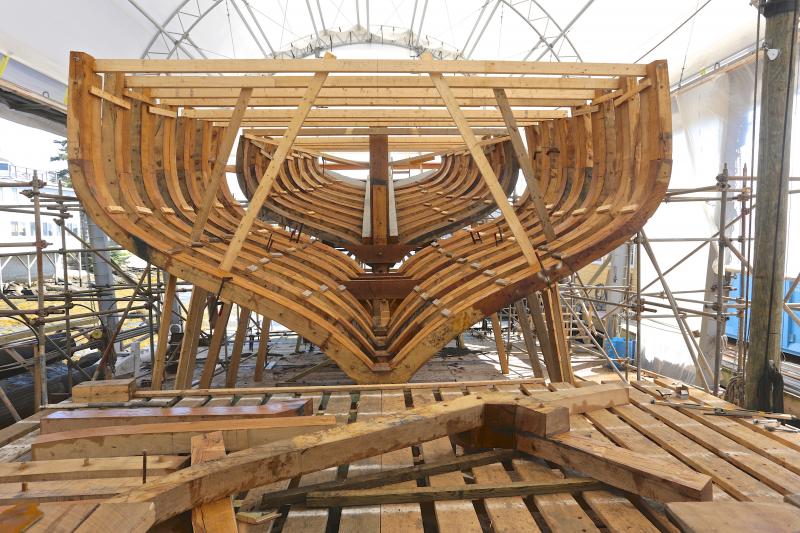Ernestina
For almost a year now I have visited the Boothbay Harbor Shipyard to check on the Ernestina-Morrissey project. It has been a fascinating process to watch and photograph.
Over the years I have photographed many projects at local shipyards - Samples, Goudy and Stevens, Hodgdon, Washburn and Doughty, but the restoration of Ernestina is quite unique.
The disassembly and recreative art, well under way, for the most part, is being managed by a small group of workers, using very traditional skills. Lots of hand work, employing tools and materials not often used by modern boat builders, piece together and reform a valued vessel of nautical history.
Part of the fun for me has been bumping into workers from past projects - Yorel, Liberty and Antonisa come to mind. Projects at Hodgdon Yachts that took a little longer back in the day, in part because, the materials used for construction required a different skill set. I think it's what fascinates me about the Ernestina project.
Live oak is a big part of this story, at least at this time, as the frames are the foundation of the boat's rebuilding. Live oak is a curious term. As opposed to what? Dead oak? O, ye of little faith and knowledge. It is a wood of notable history in the boat building world and for good reason. Its wicked tough.
I read online that “Old Ironsides” (U.S.S. Constitution) got its nickname during the war of 1812, because its live oak hull was so tough that British canon balls bounced off. The frames being created for Ernestina are constructed of live oak from Georgia.
Because of the way live oak grows it is most useful for strength and for its naturally curved formations ideally suited to the structural contours of boat construction.
Although the Ernestina will not likely need to resist the impact of canonballs, it will be the beneficiary of rugged materials and fine craftmanship.
Event Date
Address
United States
























